International Relations
7th India-Germany Intergovernmental Consultations
For Prelims: India-Germany Intergovernmental Consultations, Sustainable Development Goals, Indo-German Digital Dialogue, Emerging Digital Technologies, Digital Agriculture, AI, IoT, Indian National Centre for Ocean Information Services (INCOIS), National Centre for Polar and Ocean Research (NCPOR), New Space India Ltd, New Collective Quantified Goal, UNFCCC COP21 Paris, India-EU Trade and Technology Council, India-Middle East-Europe Economic Corridor, FDI, India-EU Free Trade Agreement, Investment Protection Agreement, P-75I Submarine.
For Mains: Significance of India-Germany relations in changing geopolitical scenario.
Why in News?
Recently, India’s Prime Minister and Germany’s Federal Chancellor co-chaired the 7th round of India-Germany Intergovernmental Consultations (7th IGC) in New Delhi.
- Under the motto “Growing Together with Innovation, Mobility and Sustainability,” it focused on technology, innovation, climate action, and strategic cooperation.
- Earlier, Germany has accorded a special status to India, which will allow for quicker approvals for military purchases.
What are the Key Highlights of the India-Germany Meeting?
- Germany’s "Focus on India" Document: It outlines a blueprint for how India and Germany can collaborate to become a "Force for Global Good" e.g., partnership on innovation and technology leadership, Sustainable Development Goals etc.
- Visas for Skilled Indians: Germany has decided to increase visas for the skilled Indian workforce from 20,000 to 90,000.
- Digital and Technology Partnerships: Both countries finalised a work plan for internet governance, tech regulations, digital transformation of the economy, emerging digital technologies, Digital Agriculture, AI and IoT to foster innovation.
- Critical and Emerging Technologies: Both reaffirmed the priorities outlined in the Innovation and Technology Partnership Roadmap in critical and emerging technologies, innovation, and skill development.
- Disaster Mitigation: MoUs were signed between the Indian National Centre for Ocean Information Services (INCOIS) and National Centre for Polar and Ocean Research (NCPOR) to enhance research in disaster mitigation and related fields.
- Space Cooperation: New Space India Ltd and GAF AG (Germany based remote sensing company) agreed for upgrading the international ground station in Neustrelitz, Germany for processing of data from OceanSat – 3 and RISAT – 1A satellites.
- Green and Sustainable Future: Both sides stressed the need to work jointly on the New Collective Quantified Goal (NCQG) which calls for at least USD 100 billion per year for developing countries.
- Both sides launched the Indo-German Green Hydrogen Roadmap and promotion of sustainable urban mobility in India.
- India-EU Strategic Partnership: Both supported the India-EU Trade and Technology Council and coordinated efforts to advance connectivity initiatives, including the India-Middle East-Europe Economic Corridor.
- Track 1.5 Dialogue: The leaders emphasised the importance of the India-Germany Track 1.5 dialogue involving think tanks and experts to foster a deeper understanding of mutual perspectives.
- Triangular Development Cooperation (TDC): The leaders agreed to upscale successful pilot projects in Cameroon, Ghana, and Malawi, while launching new projects related to millet in Ethiopia and Madagascar.
- TDC involves partnerships between two or more developing countries supported by a developed country(ies)/or multilateral organisation(s) to implement development projects.
- Mutual Legal Assistance Treaty (MLAT): India and Germany concluded the MLAT in criminal matters aims to bolster cooperation on legal issues, enhancing India and Germany's ability to jointly address security challenges.
Why are Germany and India Important for Each Other?
- Trade Relations: Germany is India’s largest trading partner in Europe.
- In FY 2022-23, bilateral trade amounted to USD 26 billion, reflecting a robust trade relationship.
- Foreign Direct Investment (FDI): Germany ranks as the ninth-largest source of FDI for India, with over USD 14.37 billion invested from April 2000 to September 2023.
- As Germany seeks to reduce its economic dependency on China, India is positioned as a key partner for diversifying trade relations in Asia.
- Innovative Collaborations: German investments include automotive technology and manufacturing plants, emphasising collaboration in advanced sectors like connected and autonomous technologies.
- Such partnerships foster innovation and skills development in India.
- Market Entry Support: Initiatives like the “Make in India Mittelstand” program assist German SMEs in entering the Indian market, promoting mutual growth.
- Financial Support: Germany’s assistance, primarily through soft loans and technical support, strengthens India's infrastructure and sustainable development efforts.
- Free Trade Agreements: Both nations are committed to progressing towards an India-EU Free Trade Agreement and an Investment Protection Agreement, which could further enhance trade and investment flows.
- Indian Investments in Germany: More than 213 Indian companies operate in Germany, primarily in IT and automotive sectors, showcasing the growing bilateral economic interdependence.
- Shared Security Concerns: Both nations recognize the threats posed by China in the Indo-Pacific region.
- India is actively seeking to reduce its dependence on arms imports in which Germany helps through arms co-production and innovation in defence e.g., proposed joint development of P-75I submarine.
- Joint Initiatives on Climate: The partnership is characterised by cooperation on climate change, particularly through the Agenda for Green and Sustainable Development, which has led to numerous agreements focusing on green hydrogen and energy security.
- People-to-People Connections: Young educated Indians are seeking jobs, while Germany has a high demand for skilled workers, creating a potential 'win-win-win' situation for both countries and their youth.
What are the Challenges in India-Germany Relations?
- Lack of Depth in Partnership: Although India and Germany have been strategic partners since 2000, the relationship has often been described as underwhelming.
- Compared to the warmth in the Indo-French relationship, India and Germany's partnership has not achieved the same level of engagement and collaboration.
- The absence of a standalone Bilateral Investment Treaty (BIT) between India and Germany limits investor confidence and protections.
- It hinders deeper economic engagement as Germany relies on the EU's BTIA with India to address concerns related to investment.
- Sniping on Democratic Values: Germany's tendency to voice concerns about India's democratic practices has created friction.
- Incidents, such as Germany’s comments on political arrests in India, led to resentment in New Delhi.
- Divergence on Russia: India's reluctance to condemn Russia’s invasion of Ukraine has led to disappointment in Germany, which in turn has strained India’s perception of Germany as a reliable partner.
- Limited Defence Cooperation: Germany's historical reluctance to engage in defence cooperation with India has been a barrier to deeper collaboration.
- Public Engagement and Awareness: There has been a greater interest in China compared to India within Germany, reflected in funding allocations and media coverage.
- Paternalistic Attitudes: Dismissive language regarding the Global South reflects a lack of appreciation for India’s position and contributions on the global stage.
- Such attitudes can undermine mutual respect and cooperation.
Way Forward
- Enhance Democratic Engagement: Establish a schedule for regular high-level meetings to foster ongoing political dialogue.
- Expand the Track 1.5 dialogue to include more stakeholders, including business leaders, academics, and civil society representatives.
- Boost Defence Ties: Develop a structured framework for defence cooperation, including co-production agreements, technology transfers, and joint military exercises.
- Respect for Sovereignty: Acknowledge and respect India’s sovereignty in its internal affairs to prevent friction caused by external criticism.
- Germany can adopt a more supportive tone in discussions, recognizing India’s context while addressing concerns.
- Global Collaboration: Work together on global challenges such as health, security, and climate change, reinforcing their roles as responsible global powers.
|
Drishti Mains Question: Evaluate the strategic partnership between India and Germany in the context of evolving global geopolitics. |
UPSC Civil Services Examination, Previous Year Question (PYQ)
Prelims
Q.‘Broad-based Trade and Investment Agreement (BTIA)’ is sometimes seen in the news in the context of negotiations held between India and (2017)
(a) European Union
(b) Gulf Cooperation Council
(c) Organization for Economic Cooperation and Development
(d) Shanghai Cooperation Organization
Ans: (a)
Mains
Q.“Africa was chopped into states artificially created by accident of European competition”. Analyze. (2013)
Q. To what extent can Germany be held responsible for causing the two World Wars? Discuss critically (2015)

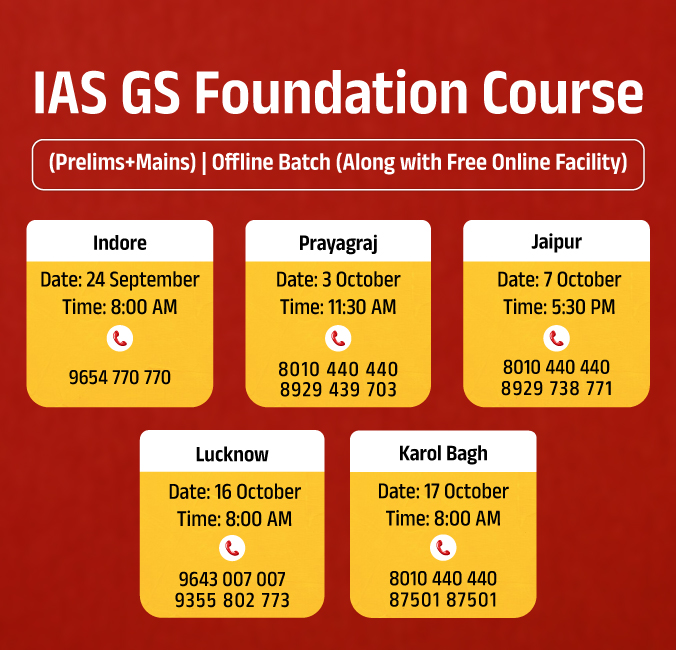
Economy
Threat to Indian Online Gaming Sector
For Prelims: Money laundering, Compound Annual Growth Rate (CAGR), PMLA 2002, KYC guidelines, Financial Action Task Force (FATF), Information Technology Rules, 2021, Real Money Gaming (RMG) operators, Central Goods and Services Tax Act, 2017, Virtual Private Network (VPNs), geo-blockers.
For Mains: Money laundering through online gaming, Challenges to the gaming sector, Government initiatives to stop Money laundering.
Why in News?
According to a report by the Digital India Foundation (DIF), Money laundering is a major threat to the Indian online gaming sector’s integrity and long-term success.
Note:
Digital India Foundation (DIF) is a not-for-profit think-tank aiming to foster digital inclusion and adoption, and the use of the Internet and related technologies for the developmental process.
What are the Key Points of the Report?
- International Online Betting Threats: The report titled “Combating Money Laundering in Online Gaming Ecosystem” highlights the rising trend of using international online betting sites for money laundering and terror financing in cybercrime.
- Sectoral Growth: India's online gaming industry is rapidly growing with a Compound Annual Growth Rate (CAGR) of 28% from FY20 to FY23.
- The sector's revenue is expected to reach USD 7.5 billion in five years.
- Employment Generation: India has 568 million gamers, creating significant employment opportunities across various sectors such as fintech, cybersecurity, and cloud services.
- The sector has the potential to create 250,000 jobs by 2025, with over 400 start-ups and 100 million daily online gamers.
- Vulnerabilities and Risks:
- The report identifies various mechanisms used for money laundering within the online gaming sector:
- Illegal operators: Many platforms bypass restrictions through mirror sites and Virtual Private Network (VPNs).
- In-game currencies and assets: Often used for illicit activities.
- Cryptocurrencies: Provide anonymity and facilitate cross-border money laundering.
- Mule accounts: Accounts used to facilitate transactions, obscuring the source of illegal funds.
- Smurfing and money dumping: Techniques where small transactions are used to avoid detection.
- The report identifies various mechanisms used for money laundering within the online gaming sector:
What is Online Gaming?
- About:
- Online gaming involves playing video games with others over the internet. Players can connect via computer, gaming console, or smartphone.
- It enables real-time interaction and competition among players, regardless of location.
- Classification:
- Skill-Based Games: These games are legal in India as long as they emphasize skill rather than chance. E.g Game 24X7, Dream11, Mobile Premier League (MPL).
- Games of Chance: These games are considered illegal if the outcome is primarily determined by chance rather than skill. E.g., Roulette where players are drawn in primarily due to the potential for monetary rewards.
- Current Scenario:
- Youth Demographics: Over 600 million people in India are under 35, comprising 45% of the population, driving the gaming industry's growth.
- Smartphone Penetration: Smartphone usage has reached 75%, enhancing access to gaming and contributing to rising engagement.
- Mobile gaming accounts for 90% of total gaming revenue, primarily through free-to-play games and in-app purchases.
- E-sports Growth: E-sports viewership in India has surged to over 80 million, with government backing and an increasing number of professional gamers.
What is the Legality of Online Gaming and Gambling in India?
- Legal Jurisdiction: The state legislators are, vide Entry No. 34 of List II (State List) of the Seventh Schedule of the Constitution of India, given exclusive power to make laws relating to Gaming, Betting and Gambling.
- Most Indian states regulate gaming on the basis of a distinction in law between ‘games of skill’ and ‘games of chance’.
- Public Gambling Act, 1867: At present, India has just one central law that governs gambling in all its forms. It's called the Public Gambling Act, 1867, which is an old law, ill-equipped to handle the challenges of digital casinos, online gambling and gaming.
- Recently, the Finance Ministry of India announced a 28% Goods and Services Tax (GST) on online money gaming, casinos, and horse racing.
- The Lotteries Regulation Act, 1998: The lottery is considered legal in India. The lottery should be organised by the state government and the place of Draw should be in that particular state.
Money Laundering
- About:
- It is an intricate method employed by individuals and organizations to hide the origins of illegally acquired money, transforming illicit funds into seemingly legitimate ones through multiple transactions.
- Methods of Money Laundering:
- Structuring (Smurfing): Dividing large sums of cash into smaller, less noticeable amounts for bank deposits.
- Trade-Based Laundering: Utilizing trade transactions to transfer value internationally while masking the origins of illegal funds.
- Shell Companies: Establishing businesses with no real activity to route illicit funds through seemingly legitimate transactions.
- Real Estate: Acquiring property with illegal funds and selling it to transform the value into legitimate assets.
- Steps to Prevent Money Laundering in India:
- Enforcement of the Prevention of Money Laundering Act (PMLA)
- Formation of the Financial Intelligence Unit (FIU)
- Mandatory Reporting by banks and financial institutions for cash transactions above a certain threshold and suspicious activity
- Strict KYC guidelines to verify customer identities
- Coordination with international organisations like the Financial Action Task Force (FATF)
- Information Technology Rules, 2021 (oversight in online gaming industry)
What are the Challenges to the Gaming Sector?
- Financial Integrity Issues: India's illegal betting market attracts over USD 100 billion in deposits annually, raising concerns about financial integrity due to easy asset transfers and conversions, which fuel money laundering and fraud.
- Cybersecurity Threats: Cyber Attack risks threaten user safety and data protection in gaming, while users bypass restrictions using VPNs and geo-blockers to access illegal gambling sites.
- Misuse of In-Game Assets: There are risks associated with the potential misuse of in-game assets and cryptocurrencies, which can complicate regulation.
- Operation of Illegal Offshore Platforms: The prevalence of illegal offshore online betting sites poses a challenge to regulatory efforts.
- Circumvention of Regulations: Many platforms circumvent existing regulations using mirror sites, illegal branding, and misleading promises, indicating a need for stronger oversight and enforcement.
What can be the Risk-mitigation steps?
- Establishment of Taskforce: Form a dedicated taskforce of experts to recommend policy measures for better regulation of the gaming sector.
- Mandatory Registration: Require all online and offshore Real Money Gaming (RMG) operators to register under the Central Goods and Services Tax Act, 2017, within 30 days of becoming liable.
- Creation of a Whitelist: Publish and regularly update a whitelist of legal online RMG operators to ensure that payment gateways, hosting providers, and ISPs serve only these operators.
- Advertising Advisory: The Information and Broadcasting Ministry should issue advisories allowing only whitelisted online gaming applications to advertise.
- Collaboration with Financial Institutions: Collaborate with banks and payment service providers to establish protocols for blocking transactions to known illegal gambling operators.
- Cross-Border Cooperation: Lead efforts to develop multilateral agreements with international organizations and other countries to enhance cooperation in combating illegal online gambling.
|
Drishti Mains Question: Critically analyze the vulnerabilities in the Indian online gaming ecosystem that enable money laundering. |
UPSC Civil Services Examination, Previous Year Question (PYQ)
Prelims:
Q. Which of the following is/are the aim/aims of “Digital India” Plan of the Government of India? (2018)
- Formation of India’s own Internet companies like China did.
- Establish a policy framework to encourage overseas multinational corporations that collect Big Data to build their large data centres within our national geographical boundaries.
- Connect many of our villages to the Internet and bring Wi-Fi to many of our schools, public places and major tourist centres.
Select the correct answer using the code given below:
(a) 1 and 2 only
(b) 3 only
(c) 2 and 3 only
(d) 1, 2 and 3
Ans: (b)
Mains:
Q. Discuss how emerging technologies and globalisation contribute to money laundering. Elaborate measures to tackle the problem of money laundering both at national and international levels. (2021)


Governance
Allocation of Satellite Spectrum
For Prelims: Spectrum Allocation, Administrative Allocation vs. Auction, International Telecommunication Union (ITU), Telecommunications Act, 2023
For Mains: Spectrum Management in India, Economic Implications of Spectrum Allocation, Regulatory Framework, Spectrum allocation practices in different countries.
Why in News?
Recently, India opted for an administrative allocation of satellite spectrum, diverging from the auction method, amid reactions from industry giants and renewed debates over spectrum management.
What is Satellite Spectrum?
- Definition:
- Satellite spectrum refers to the specific frequency bands used for communication via satellites.
- These radio frequencies are essential for transmitting signals from ground stations to satellites in orbit and vice versa, facilitating services such as television broadcasting, internet access, and mobile communication.
- Satellite spectrum refers to the specific frequency bands used for communication via satellites.
- Regulatory Oversight:
- Satellite spectrum differs from terrestrial spectrum used for mobile communication, as it operates without national boundaries.
- This international nature requires coordination and management by the International Telecommunication Union (ITU), a UN agency.
- Satellite spectrum differs from terrestrial spectrum used for mobile communication, as it operates without national boundaries.
- Importance in Communication:
- With the increasing demand for satellite services especially in areas like broadband and emergency communications, spectrum allocation becomes crucial.
- Efficient management of satellite spectrum ensures reliable connectivity, especially in remote or underserved regions.
- With the increasing demand for satellite services especially in areas like broadband and emergency communications, spectrum allocation becomes crucial.
- Satellite Frequency Bands:
- L-band (1-2 GHz): Utilised for GPS and mobile satellite services.
- S-band (2-4 GHz): Used for weather radar, air traffic control, and mobile satellite applications.
- C-band (4-8 GHz): Commonly employed for satellite TV broadcasting and data communication.
- X-band (8-12 GHz): Primarily utilised by military applications for radar and communication.
- Ku-band (12-18 GHz) and Ka-band (26-40 GHz): Used for satellite television, internet services, and high-throughput data transmission.
International Telecommunication Union (ITU)
- It is the UN specialised agency for Information and Communication Technologies (ICTs).
- Established in 1865 to enable international connectivity in communication networks, it is headquartered in Geneva, Switzerland.
- It allocates global radio spectrum and satellite orbits, develops the technical standards that ensure networks and technologies seamlessly interconnect, and strives to improve access to ICTs to underserved communities worldwide.
Status of the Satellite Communication (SatCom) Sector in India
- Market Size:
- India is ranked fourth globally in terms of investments in the Satcom sector.
- The Indian Satcom sector is valued at approximately USD 2.3 billion annually which is expected to grow to USD 20 billion by 2028.
- Around 290.4 million households in India remain untapped for broadband services, presenting a significant opportunity for satellite operators.
- India’s focus on development and adoption of cutting-edge technologies across 5G/6G services and Satellite Communication (Satcom) has further accelerated the sector’s progress.
- Applications:
- Satcom services support vital sectors, including telecommunications, broadcasting, rail, and maritime communications.
- Satcom services support 5 billion ATM transactions annually, through 125,000 Very Small Aperture Terminal (VSAT)-enabled ATMs.
What Are the Methods of Spectrum Allocation In India?
- Auction Method: Competitive bidding process where the government sells spectrum licenses to the highest bidder.
- Governed by the Telecommunications Act, 2023, which mandates auctions for most spectrum allocations.
- Benefits:
- Promotes efficient resource allocation, ensures transparency, and generates significant revenue for the government.
- Primarily used for terrestrial mobile services where multiple entities compete for access.
- Administrative Allocation: The government directly assigns spectrum licenses without a bidding process.
- Certain entries in the First Schedule of the Telecommunications Act, 2023 allow for administrative allocation, particularly for satellite spectrum.
- Benefits:
- Provides flexibility, suitable for sectors with low competition, and ensures easier access for government-related services.
- Often used for emerging industries, public services, and national security.
- Differences Between Auction and Administrative Allocation:
| Auction Method | Administrative Allocation |
|
|
|
|
|
|
|
|
|
|
|
|
Spectrum Allocation Controversies in India
- Shift to Administrative Assignments: India's spectrum allocation has faced scrutiny, particularly with the transition to administrative methods.
- 2G Spectrum Scam: This major scandal involved the first-come, first-served allocation of 2G licenses, resulting in:
- Financial Losses: Alleged loss to the exchequer of Rs. 30,984 crore.
- Presumptive Loss: Estimated loss of Rs. 1.76 trillion from 122 2G licenses.
- Supreme Court Ruling (2012) mandated auctions as the preferred allocation method due to the 2G scandal's fallout.
Why did India Choose for Administrative Allocation?
- Non-Exclusive Use: Unlike terrestrial spectrum, satellite spectrum can be shared among multiple operators, making administrative allocation practical for diverse users.
- Accessibility to Remote Areas: Administrative allocation aims to enhance connectivity in remote and underserved regions, facilitating access to satellite services.
- Flexibility: This method allows the government to quickly assign spectrum to companies without the lengthy auction process, promoting faster deployment of services.
- The US and Brazil moved back to administrative allocations after finding auctions impractical.
- Encouraging Emerging Industries: It supports the growth of new technologies and services, such as satellite communications, which may not be adequately addressed by auctions.
- Regulatory Alignment: As a signatory to the ITU, India chose to adopt the global standard of administratively allocating satellite spectrum.
- The Telecommunications Act, 2023, had also added spectrum for satellite communication in the list of administrative allocation.
Salient Features of the Telecommunications Act, 2023
- Definitions: The Act clearly defines its scope, thereby reducing uncertainties.
- Messages sent through internet-based messaging service providers such as WhatsApp, Signal, and Telegram, as well as those that are encrypted (except Over-the-Top (OTT) services), are within the Act's ambit.
- Right of Way (RoW) Framework: The Act provides an effective RoW framework, both on public and private property.
- The definition of public entities has been broadened to include government agencies, local bodies, and Public Private Partnerships (PPP) projects like airports, seaports, and highways.
- Public entities shall be obligated to provide right of way except in special circumstances.
- Common Ducts: In line with PM Gati Shakti's vision, the law provides for the Central Government to establish common ducts and cable corridors.
- National Security Measures: Section 20 (2) of the Act allows the government to stop the transmission of any message in the interest of public safety and during a public emergency.
- This majorly expands the number of government entities that may be able to intercept messages.
- Digital Bharat Nidhi: With the new Act, the Universal Service Obligation Fund (USOF) will become Digital Bharat Nidhi, which can be used to fund research and development and pilot projects instead of just supporting the establishment of telecom services in rural areas.
- The Act also provides a legal framework for Regulatory Sandbox to facilitate innovation and deployment of new technology.
- Protection of Users: Commercial messages sent without the user's consent may lead to the relevant operator facing a fine and being banned from providing services.
Conclusion
India’s decision to adopt administrative allocation for satellite spectrum aligns with global practices, enhancing efficiency and accessibility in the rapidly evolving satcom sector. With the satcom market expected to grow significantly, administrative allocation aims to facilitate connectivity in underserved regions, promoting digital inclusion. The move reflects lessons learned from past spectrum allocation controversies, particularly the 2G scam, emphasising transparency and accountability in regulatory frameworks.
|
Drishti Mains Question Discuss the implications of India’s shift to administrative allocation of satellite spectrum in light of past controversies and future market potential. |


Important Facts For Prelims
Revival of National Mission for Manuscripts (NMM)
Why in News?
Recently, the Union Ministry of Culture is set to revive and relaunch the National Mission for Manuscripts (NMM).
What are the Key Points of the Revived NMM?
- National Manuscripts Authority: The Union Ministry of Culture plans to form an autonomous body named National Manuscripts Authority under the Ministry of Culture.
- Presently, NMM is a part of the Indira Gandhi National Centre for Arts.
- Achievements of NMM: Between 2003-24, metadata of 52 lakh manuscripts have been prepared, over 3 lakh titles have been digitised and one-third of them have been uploaded.
- Concerns: Only about 70,000 of the 1.3 lakh uploaded manuscripts are accessible.
- A significant portion of manuscripts is privately owned, with limited incentive for owners to make them publicly accessible.
- Future Roadmap:
- Establishment of university chairs abroad in departments focusing on ancient Indian studies.
- Suggestions for involving Intellectual property rights (IPRs) and legal experts to address issues related to the sale of manuscripts abroad and private ownership.
- Emphasis on preserving non-Brahmi and lesser-known scripts.
Manuscripts
- Definition: A manuscript is a handwritten composition created on materials such as paper, bark, cloth, metal, or palm leaf, and it must be at least 75 years old.
- Exclusions: Lithographs and printed volumes are not considered manuscripts.
- Script Variability: Often, one language is represented in multiple scripts. For instance, Sanskrit is written in scripts like Oriya, Grantha, and Devanagari.
- Distinction from Historical Records: Unlike historical records (e.g., epigraphs, firmans, revenue records), which document historical events, manuscripts primarily contain knowledge content.
- Manuscripts provide knowledge on philosophy, science, literature, and art.
- Historical Interest: In the 18th century, the Nawab of Awadh presented an illuminated manuscript of the Padshahnama to King George III of England.
- Hiuen Tsang, a 7th century Chinese traveller, took many manuscripts back to China.
- British Interest: William Jones, C.P. Brown, John Leyden, Colin Mackenzie, Charles Wilkins, H.H. Wilson, and HT Colebrooke played significant roles in studying and preserving Indian manuscripts.
- Early Efforts in Cataloging: Efforts to catalogue Indian manuscripts began as early as 1803 with the efforts of HT Colebrooke, Asiatic Society of Bengal’s fourth president.
What are the Key Facts About NMM?
- About: It is an initiative of the Ministry of Culture to preserve and document India's vast collection of manuscripts.
- It was launched in 2003 to uncover, document, conserve, and make accessible India’s vast manuscript heritage.
- Implementing Bodies: The Department of Culture is responsible for implementing the mission, while the Indira Gandhi National Centre for the Arts (IGNCA) serves as the nodal agency.
- Objectives: It is dedicated to conserving manuscripts and disseminating the knowledge contained in them, working toward its motto “conserving the past for the future.”
- Scope and Collection: India possesses an estimate of five million manuscripts, probably the largest collection in the world.
- 70% of manuscripts are in Sanskrit.
UPSC Civil Services Examination, Previous Year Question (PYQ)
Prelims:
Q. With reference to Indian History, Alexander Rea, A. H. Longhurst, Robert Sewell, James Burgess and Walter Elliot were associated with (2023)
(a) archaeological excavations
(b) establishment of English Press in Colonial India
(c) establishment of Churches in Princely States
(d) construction of railways in Colonial India
Explanation: (a)
Q. Who among the following Mughal Emperors shifted emphasis from illustrated manuscripts to album and individual portrait? (2019)
(a) Humayun
(b) Akbar
(c) Jahangir
(d) Shah Jahan
Ans: (c)


Important Facts For Prelims
Particulate Matter & SO2 Control
Why in News?
Recently, CSIR-National Environmental Engineering Research Institute (NEERI) advised against further Flue Gas Desulfurization (FGD) installations in Indian thermal power plants (TPPs), stating that Sulphur Dioxide (SO₂) emissions have minimal impact on ambient air quality.
- The report of the institute indicated that the focus should shift to controlling Particulate Matter (PM) rather than solely on SO₂ emissions.
Note:
- CSIR-NEERI is a research institute created and funded by the Government of India. It functions under the Ministry of Science & Technology.
- It was established in Nagpur in 1958 with focus on water supply, sewage disposal,communicable diseases and to some extent on industrial pollution and occupational diseases found common in post-independent India.
What is Flue Gas Desulfurization (FGD)?
- About:
- FGD is the process of removing sulphur compounds from the exhaust emissions of fossil-fueled power stations.
- This is done through the addition of absorbents, which can remove up to 95% of the sulphur dioxide from the flue gas.
- Flue gas is the material emitted when fossil fuels such as coal, oil, natural gas, or wood are burned for heat or power.
- Categorisation:
| Category | Location/Area | Timelines for Compliance |
| A |
Within 10 km radius of NCR or cities with million-plus population (2011 Census) |
Up to 31st December 2024 |
| B | Within 10 km radius of Critically Polluted Areas or Non-attainment cities (as defined by CPCB) | Up to 31st December 2025 |
| C | Areas not included in Categories A and B | Up to 31st December 2026 |
What is Air Pollution?
- About:
- Air pollution encompasses the presence of solids, liquids, gases, noise, and radioactive radiation in the atmosphere, at concentrations harmful to humans, living organisms, property, or environmental processes.
- These substances, known as pollutants, can be either natural or human-made and can originate from various sources such as industrial processes, vehicle emissions, agricultural activities, and natural events like wildfires and volcanic eruptions.
- Air pollution encompasses the presence of solids, liquids, gases, noise, and radioactive radiation in the atmosphere, at concentrations harmful to humans, living organisms, property, or environmental processes.
- Particulate Matter (PM):
- PM refers to a complex mixture of extremely small particles and liquid droplets suspended in the air. These particles come in a wide range of sizes and can be made up of hundreds of different compounds.
- PM10 (coarse particles) - Particles with a diameter of 10 micrometres or less.
- PM2.5 (fine particles) - Particles with a diameter of 2.5 micrometres or less.
- PM refers to a complex mixture of extremely small particles and liquid droplets suspended in the air. These particles come in a wide range of sizes and can be made up of hundreds of different compounds.
- Sulphur Dioxide:
- SO2 emissions are a significant contributor to air pollution. It can react with other compounds in the atmosphere to form small particles.
- These particles contribute to PM pollution.
- The greatest source of SO2 in the atmosphere is the burning of fossil fuels in power plants and other industrial facilities.
- Other sources include industrial processes such as extracting metal from ore, natural sources such as volcanoes, and locomotives, ships and other vehicles and heavy equipment that burn fuel with high sulphur content.
- SO2 emissions are a significant contributor to air pollution. It can react with other compounds in the atmosphere to form small particles.
- Government Initiatives for Controlling Air Pollution:
Note: In M.C. Mehta vs. Union of India (1986), the Supreme Court treated the right to live in pollution free environment as a part of fundamental right to life under Article 21 of the Constitution.
UPSC Civil Services Examination Previous Year Question (PYQ)
Prelims
Q1. Why is there a concern about copper smelting plants? (2021)
- They may release lethal quantities of carbon monoxide into environment.
- The copper slag can cause the leaching of some heavy metals into environment.
- They may release sulphur dioxide as a pollutant.
Select the correct answer using the code given below.
(a) 1 and 2 only
(b) 2 and 3 only
(c) 1 and 3 only
(d) 1, 2 and 3
Ans: (b)
Q2. With reference to furnace oil, consider the following statements: (2021)
- It is a product of oil refineries.
- Some industries use it to generate power.
- Its use causes sulphur emissions into the environment.
Which of the statements given above are correct?
(a) 1 and 2 only
(b) 2 and 3 only
(c) 1 and 3 only
(d) 1, 2 and 3
Ans: (d)


Rapid Fire
Expansion of Indian Sign Language (ISL)
Recently, India added some 2,500 new terms including words in English and Hindi to the Indian Sign Language (ISL) dictionary e.g., Aadhaar card, Blockchain, Ursa Nebula etc.
- New terms were added during the celebration of International Day of Sign Languages 2024 with the theme “Sign up for Sign Language Rights”.
- The UN General Assembly has proclaimed 23rd September as the International Day of Sign Languages in 2017 and it was first celebrated in 2018.
- The World Federation of the Deaf (WFD) was established on 23rd September 1951.
- Expansion of the ISL facilitated the deaf community’s engagement particularly in scientific, cultural, and internet related contexts.
- The expansion of the ISL dictionary was spearheaded by the Indian Sign Language Research and Training Centre (ISLRTC).
- ISLRTC is an autonomous organisation established under Societies Registration Act, 1860 and functions under the Ministry of Social Justice and Empowerment.
- It is dedicated to researching, fostering educational access and promoting Indian sign language as a linguistic system.
Read More: Empowering Persons with Disabilities


Rapid Fire
Landfall of a Cyclone
Recently, Cyclone Dana made landfall in Odisha.
- Landfall is the event of a tropical cyclone moving from water onto land, specifically when the storm's center (eye of the cyclone) crosses the coast.
- It differs from a direct hit where the core of high winds (or eye-wall) comes onshore but the center of the storm may remain offshore.
- The Eye of the Cyclone is a central region of clear skies, warm temperatures, and low atmospheric pressure.
- Other Components of the Cyclone:
- Eyewall: It is the most dangerous part of a tropical cyclone, with the strongest winds, heaviest rainfall, and towering convective clouds rising up to 15,000 meters (49,000 feet).
- Rainbands: Curved bands of clouds and thunderstorms trail away from the eye wall in a spiral form, capable of producing heavy bursts of rain, strong winds, and even tornadoes.
Read More: Cyclone Dana


Rapid Fire
Giant Fertilizer Bomb
A study in “Proceedings of the National Academy of Sciences” suggests that a meteorite impact 3.26 billion years ago acted as a giant fertilizer bomb for early life on earth.
- Nutrient Delivery: Ancient rocks from the Barberton Greenstone Belt in northeastern South Africa provided evidence of recovery and growth in microbial life after the meteorite impact.
- The carbonaceous chondrite meteorite delivered essential nutrients like phosphorus and iron, enabling early microbes and archaea to thrive.
- Effect of the Impact: The meteorite, measuring 23-36 miles in diameter and 50-200 times larger than the asteroid that killed the dinosaurs, caused widespread devastation.
- Its impact created a massive vapor cloud and tsunami, resulting in prolonged darkness and heating that severely affected life at the time.
- Resilience of Early Life: Despite initial devastation, life rebounded quickly, with microorganisms adapting and thriving in nutrient-rich environments created by the impact.
- The findings challenge the notion that meteorite impacts are solely destructive, highlighting their potential role in fostering early life.
Read more: Diyodar Meteorite


Rapid Fire
Smart Insulin for Diabetes
The latest study introduces an engineered insulin molecule, named NNC2215, which includes a built-in "on-and-off switch" that allows it to automatically respond to fluctuations in blood glucose levels.
- Two Main Components of NNC2215:
- A Ring-Shaped Structure allows the insulin molecule to change shape depending on blood sugar levels.
- A Glucoside Molecule resembles glucose in structure and helps control the activation of insulin.
- About Diabetes: Diabetes is a chronic disease that occurs either when the pancreas does not produce enough insulin or when the body cannot effectively use the insulin it produces.
- As per the WHO, in 2019, diabetes was the direct cause of 1.5 million deaths across the globe and 48% of all deaths due to diabetes occurred before the age of 70 years.
- Related Initiatives:
- National Programme for Prevention and Control of Cancer, Diabetes, Cardiovascular Diseases and Stroke (NPCDCS).
- World Diabetes Day (14th November)
- Global Diabetes Compact
Read More: Diabetes Mellitus and Tuberculosis



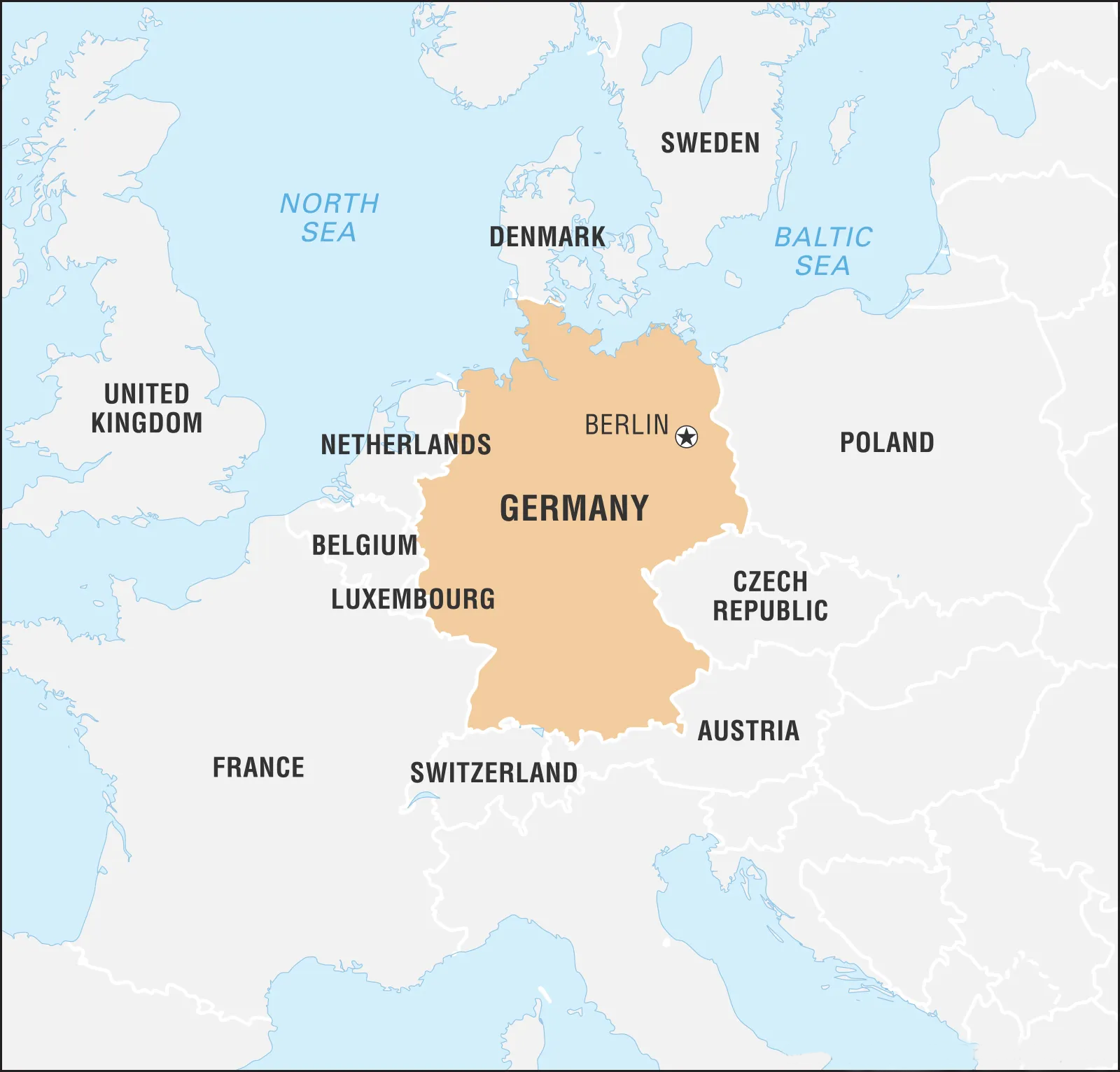

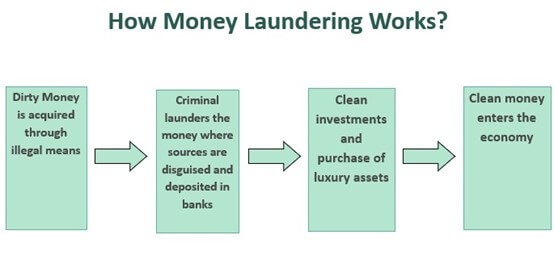
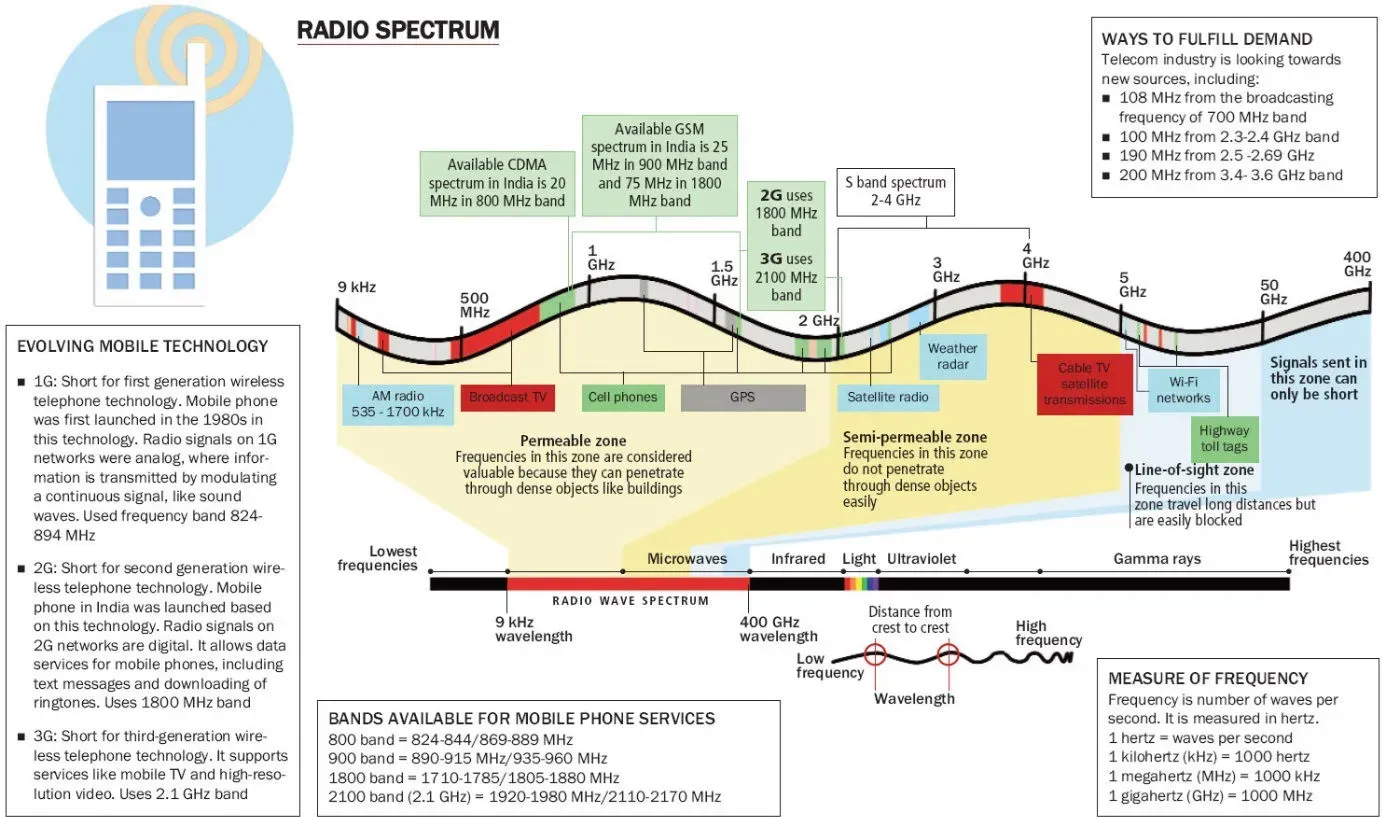
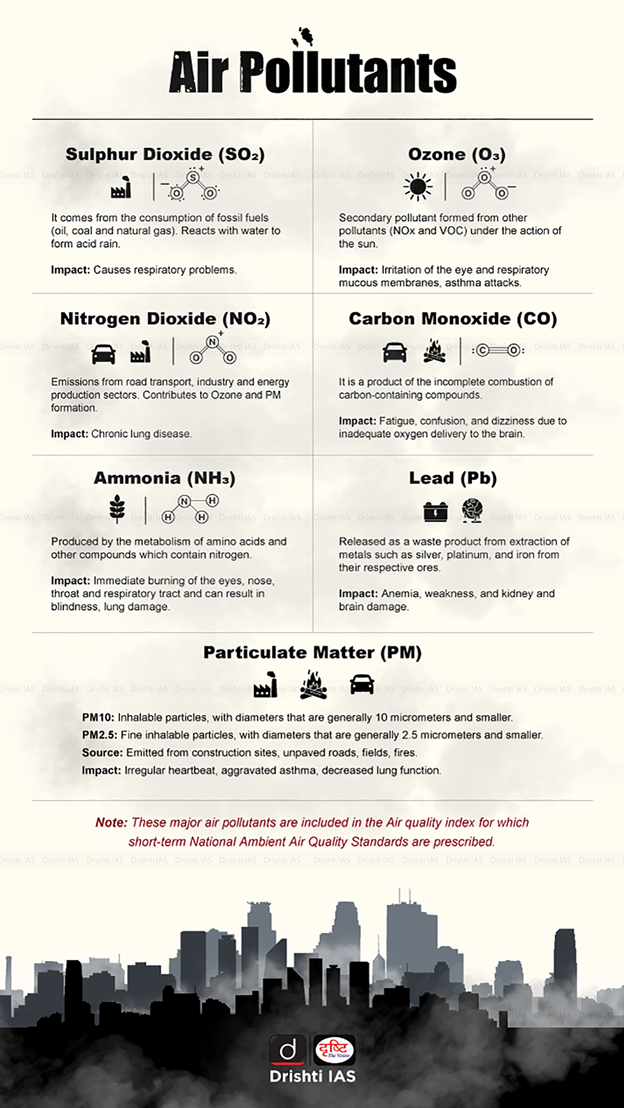
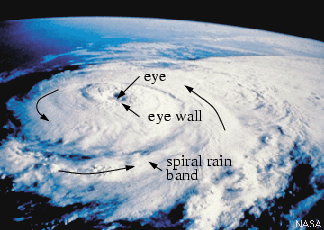
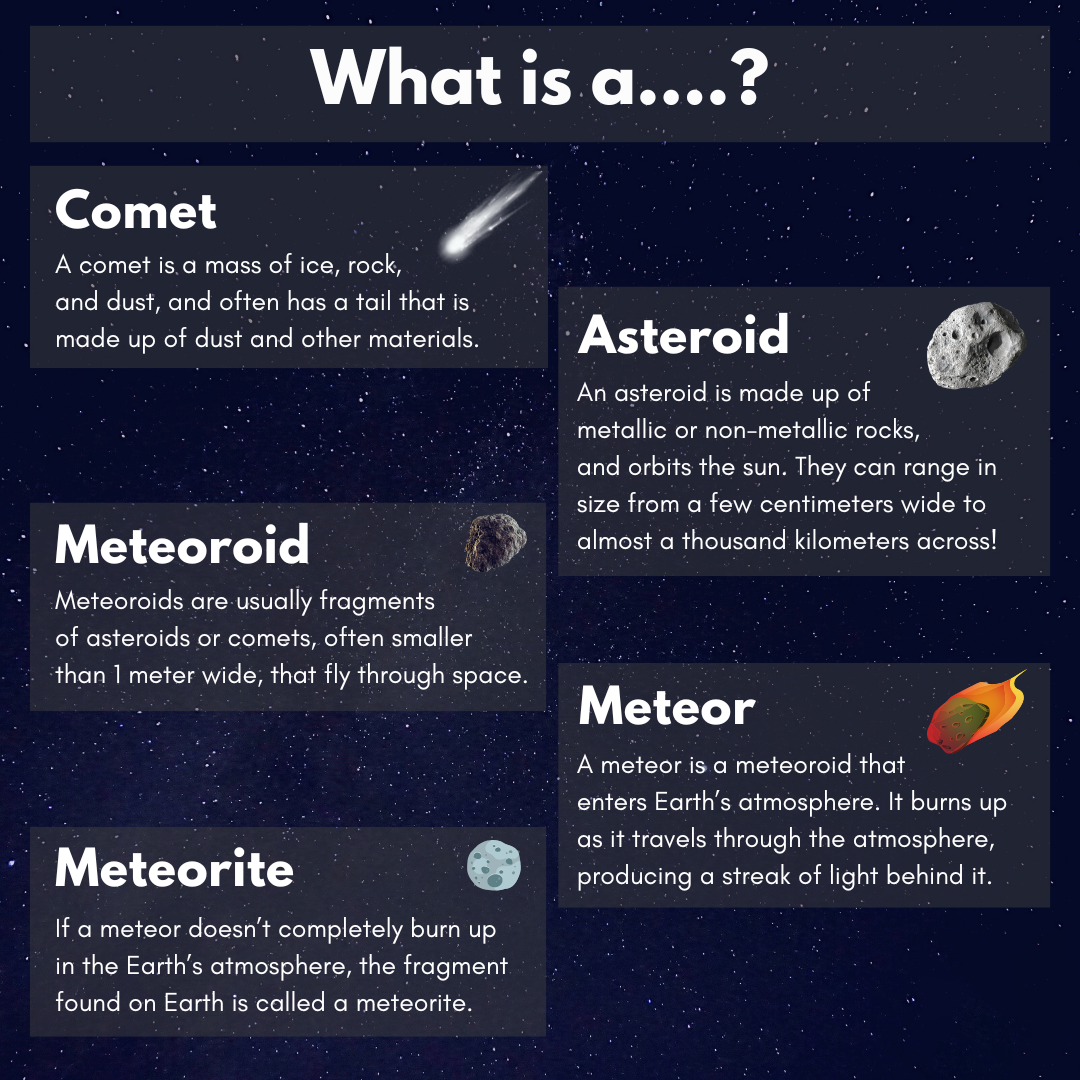





-min.jpg)